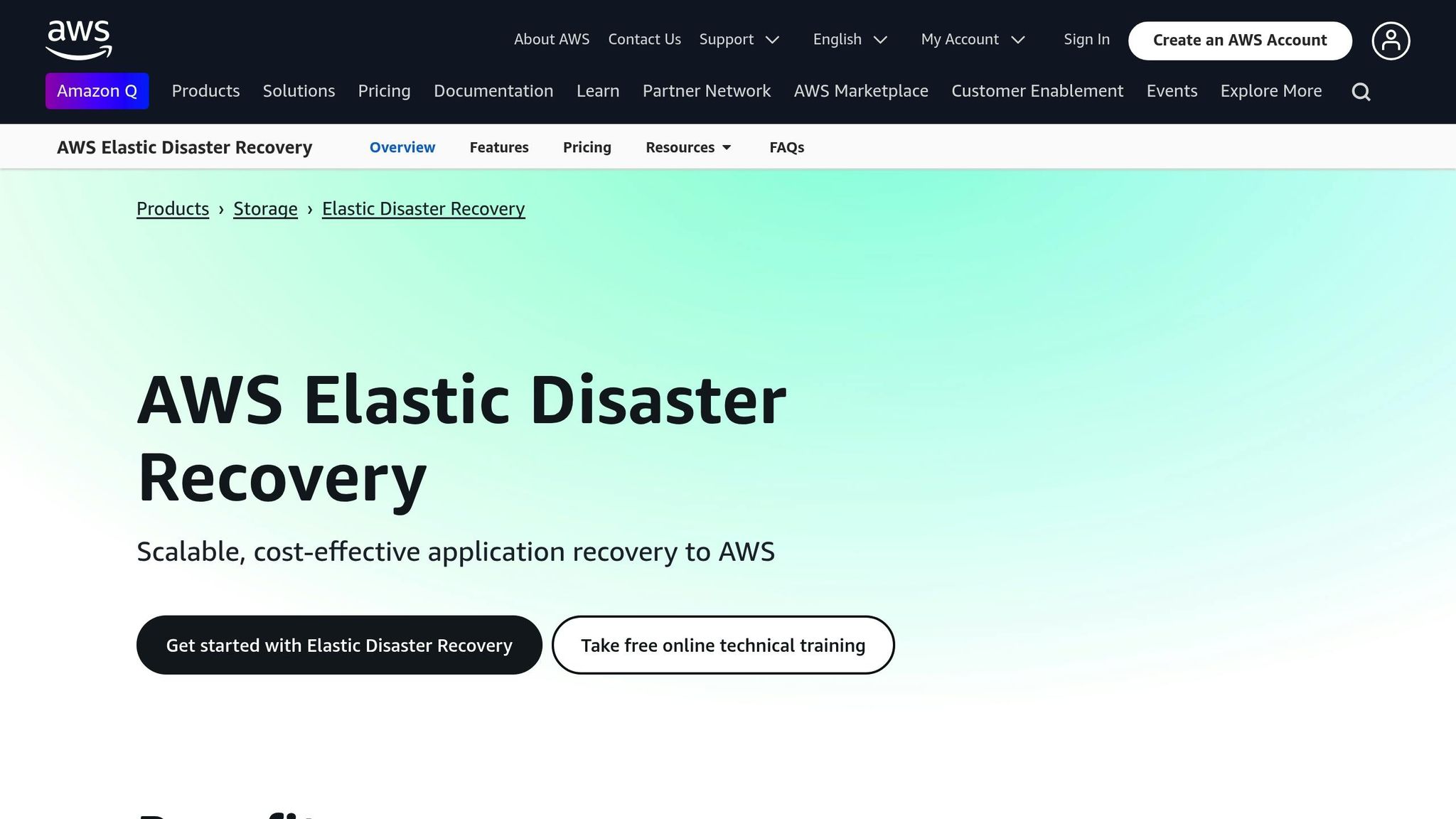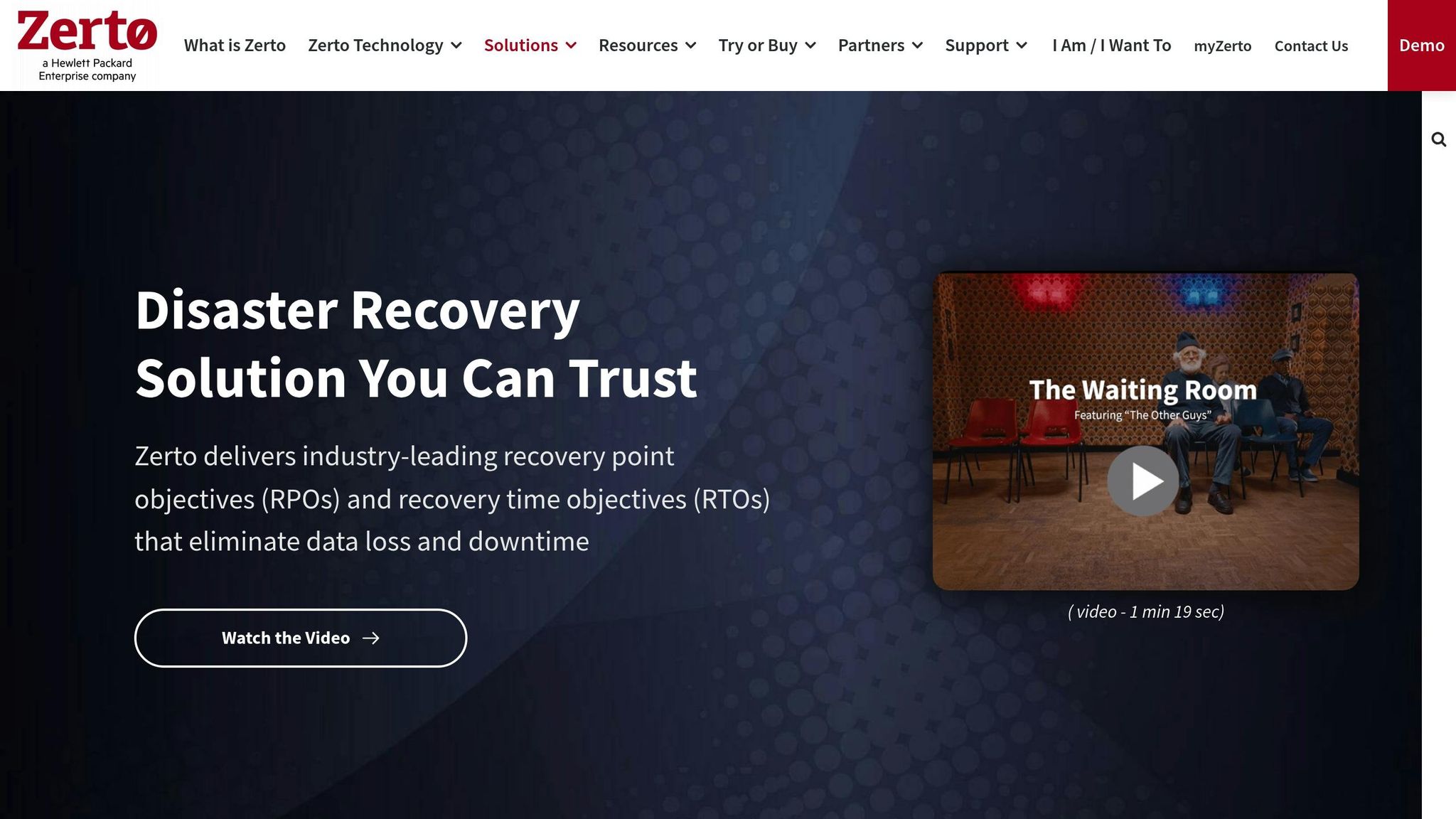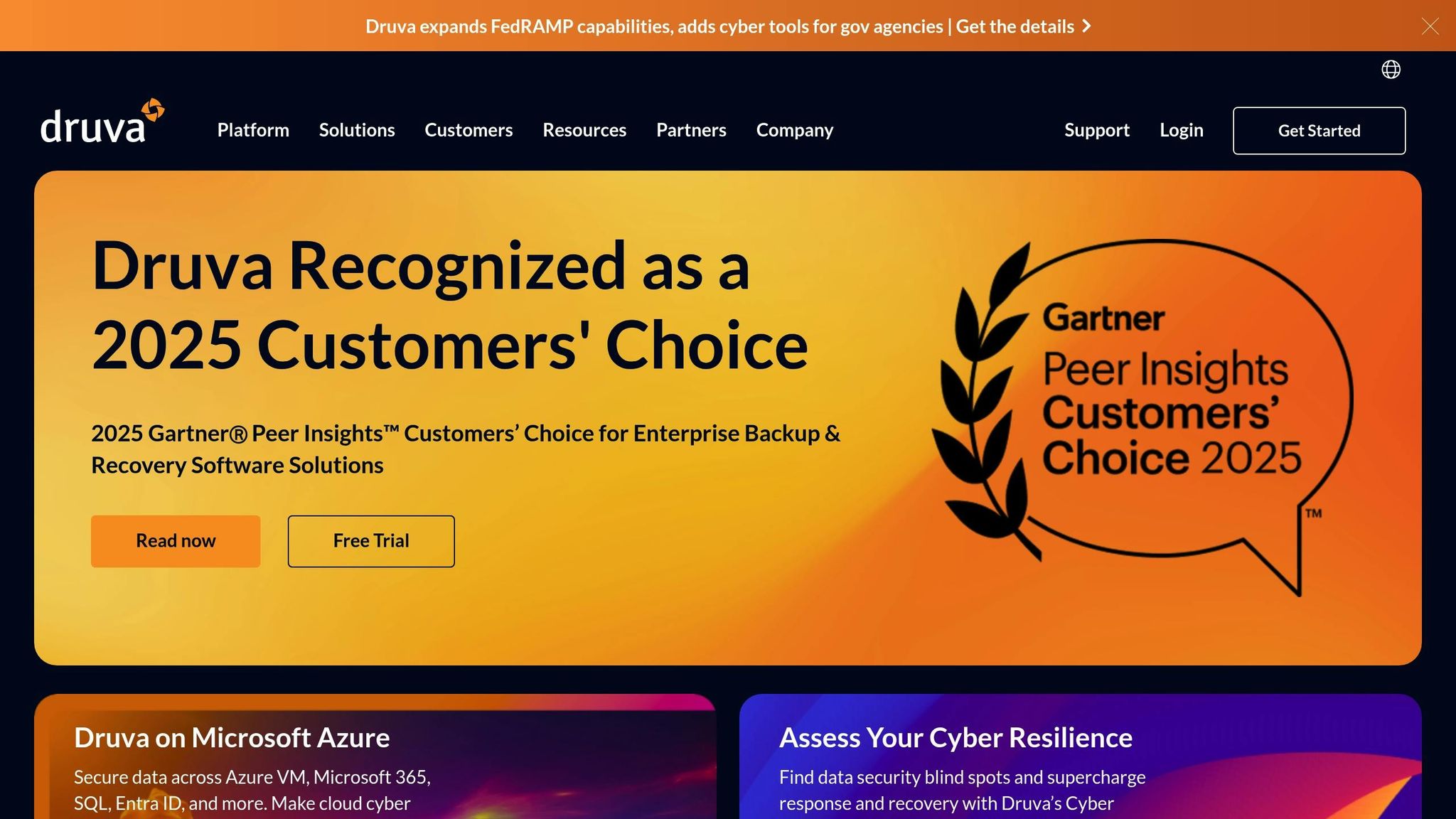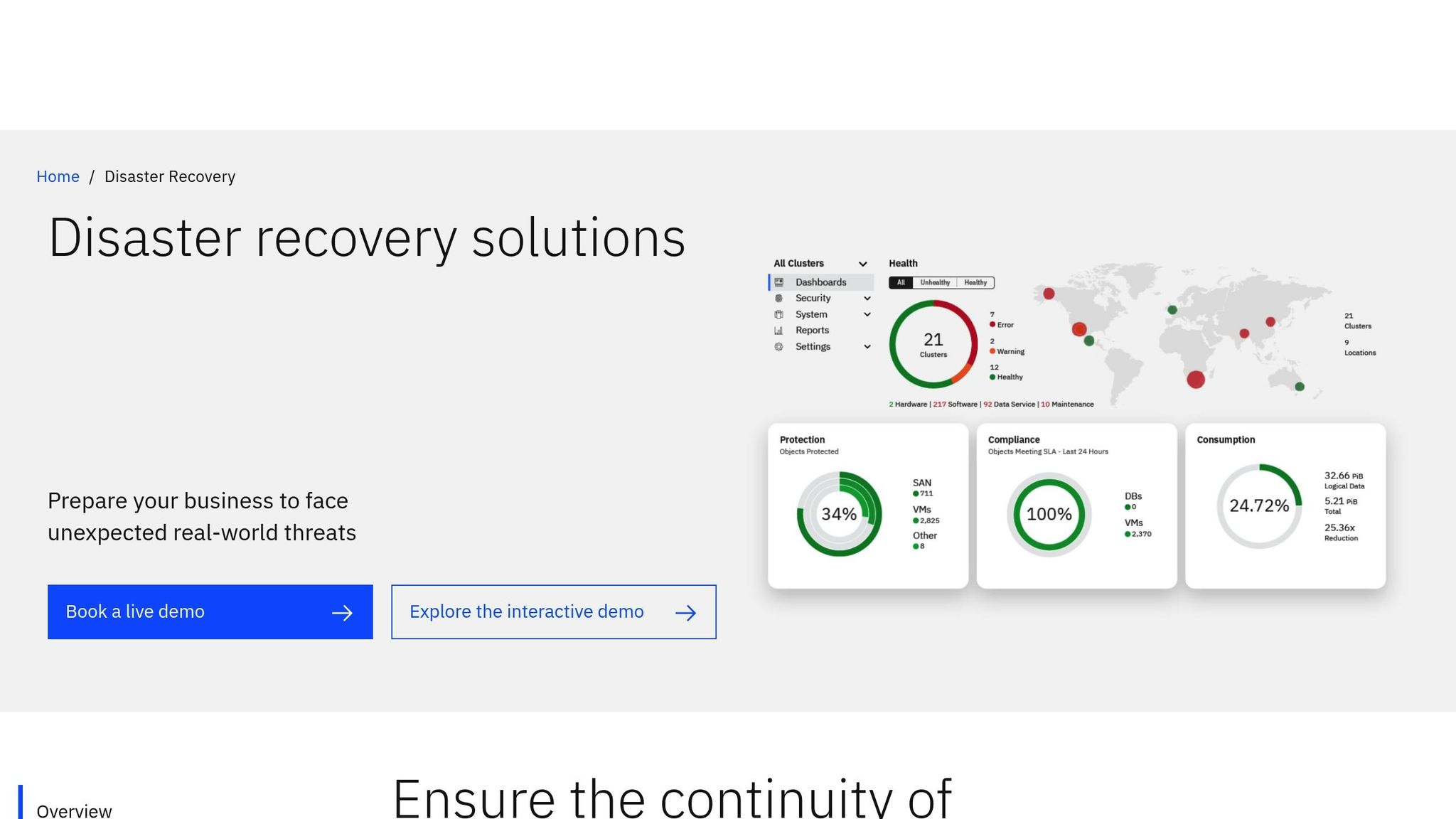Top 7 Cloud Disaster Recovery Tools for Healthcare
Post Summary
Cloud disaster recovery tools help healthcare organizations protect patient data, ensure operational continuity, and comply with regulations like HIPAA during disruptions.
The top tools include Azure Site Recovery, AWS Elastic Disaster Recovery, Veeam Backup & Replication, Zerto, Druva Phoenix, IBM Disaster Recovery Services, and Censinet RiskOps™
Azure Site Recovery provides real-time replication, automated recovery plans, and built-in encryption to ensure HIPAA compliance and operational continuity.
Censinet RiskOps™ combines risk management with disaster recovery, protecting PHI, medical devices, and critical healthcare systems while ensuring compliance.
Disaster recovery ensures patient safety, protects sensitive data, and minimizes downtime, enabling healthcare providers to deliver uninterrupted care during disruptions.
Visit Censinet’s website or contact info@censinet.com for more information.
In healthcare, protecting patient data and minimizing system downtime is critical. Cloud disaster recovery tools help ensure continuous operations, safeguard sensitive information, and meet regulatory requirements like HIPAA. Here's a quick look at the top 7 tools:
- Azure Site Recovery: Real-time replication, automated recovery plans, and built-in security for HIPAA compliance.
- AWS Elastic Disaster Recovery: Continuous data protection, automated failover, and secure recovery orchestration.
- Veeam Backup & Replication: Secure backups, cloud integration, and scalable storage for long-term data retention.
- Zerto: Real-time replication, automated failover, and synchronization for EHRs and medical applications.
- Druva Phoenix: Cloud-based platform with automated compliance management and encrypted data protection.
- IBM Disaster Recovery Services: Enterprise-grade recovery tools for patient data and clinical applications.
- Censinet RiskOps™: Combines risk management with disaster recovery, protecting PHI and critical healthcare systems.
These solutions help healthcare providers maintain operational stability, protect patient safety, and comply with regulations. Below is a comparison of the tools:
| Tool | Key Features | Best For |
|---|---|---|
| Azure Site Recovery | Real-time replication, automated recovery | Seamless operation during outages |
| AWS Elastic Disaster Recovery | Continuous data protection, secure failover | Fast recovery of critical systems |
| Veeam Backup & Replication | Secure backups, cloud integration | Long-term data retention |
| Zerto | Real-time replication, app synchronization | Minimal downtime for EHRs |
| Druva Phoenix | Automated compliance, encrypted data | HIPAA compliance |
| IBM Disaster Recovery Services | Enterprise-grade tools, quick recovery | Large-scale healthcare systems |
| Censinet RiskOps™ | Risk management, disaster recovery | Integrated risk and recovery |
These tools are essential for ensuring healthcare providers can deliver uninterrupted care, even during unexpected disruptions.
Disaster Recovery for Healthcare Organizations
1. Azure Site Recovery

Azure Site Recovery helps keep your systems running smoothly even during unexpected disruptions. It allows you to replicate workloads either from on-premises to Azure or between different Azure regions. This automation ensures critical healthcare systems remain operational when emergencies strike.
Key Features
- Automated Recovery Plans: Focus on restoring essential applications first to maintain seamless operations.
- Continuous Data Replication: Reduces recovery point objectives (RPO) by replicating data in real time.
- Built-In Security: Encrypts data both in transit and at rest, helping meet HIPAA compliance standards.
How It Works
- Assessment: Review your infrastructure to identify critical workloads that need protection.
- Replication Setup: Configure settings based on your specific recovery needs.
- Testing: Run disaster recovery drills regularly to ensure everything works without affecting live systems.
To maintain service integrity, make sure to set realistic recovery time objectives, map networks accurately, and outline clear application dependencies.
2. AWS Elastic Disaster Recovery

AWS Elastic Disaster Recovery helps protect essential patient data and healthcare systems. Similar to Azure Site Recovery, this AWS solution provides automated, real-time recovery designed to meet the specific demands of healthcare organizations.
Key Features
- Real-Time Data Protection: Continuously replicates healthcare applications and data, ensuring patient records and clinical information remain up-to-date.
- Automated Recovery: Quickly launches systems in AWS using automated failover, reducing downtime for critical medical services and electronic health record (EHR) systems.
Implementation Best Practices
- Set Recovery Priorities: Determine which healthcare applications are most critical and create a recovery sequence based on their importance to operations.
- Configure Replication Settings: Adjust data replication to balance bandwidth usage and avoid disrupting daily activities.
- Test Regularly: Schedule recovery drills to confirm system readiness and ensure staff can handle recovery procedures effectively.
Security Considerations
The platform safeguards sensitive healthcare data with encryption during replication and storage. All data transfers are conducted over secure channels to maintain privacy and compliance.
Recovery Orchestration
AWS Elastic Disaster Recovery allows IT teams to create detailed recovery plans. These plans address application dependencies, network settings, boot orders, and post-recovery checks, ensuring essential clinical operations can resume smoothly and without delays.
3. Veeam Backup & Replication
Veeam Backup & Replication offers healthcare organizations a dependable disaster recovery solution to protect sensitive data like Protected Health Information (PHI) and patient records.
Key Features
- Secure Data Protection: Ensures sensitive healthcare data is safeguarded through reliable backup processes.
- Cloud Integration: Works seamlessly with existing cloud systems, allowing healthcare providers to use flexible cloud storage for improved business continuity.
Implementation Strategy
To make the most of Veeam Backup & Replication in healthcare settings:
- Set up automated backups for essential data to minimize risks.
- Test recovery procedures on a regular basis to ensure readiness.
- Use scalable cloud storage for long-term data retention and easier management.
sbb-itb-535baee
4. Zerto

Zerto stands out with its continuous, real-time replication, specifically designed to meet the critical recovery demands of the healthcare industry. It focuses on minimizing downtime and protecting essential patient systems through advanced disaster recovery capabilities.
Key Features
Zerto is built to handle the fast recovery needs of modern healthcare environments.
Real-Time Replication
Zerto replicates data as it changes, reducing Recovery Point Objectives (RPOs) to just seconds. This ensures minimal data loss, even in high-pressure clinical settings.
Automated Failover and Testing
The platform supports rapid failover, allowing operations to continue during outages. Regular testing of disaster recovery plans is possible without disrupting day-to-day operations.
Benefits for Healthcare
Zerto also offers features tailored to healthcare's unique requirements:
HIPAA Compliance
Zerto helps organizations meet HIPAA standards with features like:
- Encrypted data replication
- Detailed audit trails
- Role-based access controls
- Comprehensive reporting tools
Application Synchronization
Zerto ensures that interconnected applications and databases stay in sync during recovery. This is crucial for systems such as:
- Electronic Health Records (EHR)
- Medical imaging software
- Patient scheduling platforms
- Billing and insurance systems
Implementation Tips
- Focus on protecting mission-critical applications, and ensure recovery plans are well-documented for quick staff access.
- Conduct regular recovery tests to verify that restoration processes are efficient.
- Provide staff with thorough training on disaster recovery protocols to ensure smooth execution when needed.
With its focus on real-time replication and healthcare-specific features, Zerto is a strong choice for cloud-based disaster recovery solutions.
5. Druva Phoenix

Druva Phoenix is a cloud-based disaster recovery platform designed to keep essential patient data secure and accessible, even during interruptions. It also adheres to strict HIPAA standards, making it well-suited for healthcare settings.
Key Compliance Features
- Automated Compliance Management: Implements retention policies automatically, includes encryption for data both at rest and in transit, provides detailed audit logs, and offers precise access controls to protect PHI.
6. IBM Disaster Recovery Services

IBM Disaster Recovery Services provides a cloud-based solution designed to protect patient data and clinical applications while meeting HIPAA requirements. This service helps healthcare organizations keep essential systems running by offering robust data protection and recovery tools, backed by enterprise-level security.
The platform ensures quick recovery and uninterrupted operations during both planned maintenance and unexpected disruptions. It supports healthcare providers in minimizing downtime for critical systems like electronic health records and clinical applications. Regular testing helps verify that recovery plans are effective in real-world scenarios, and its built-in compliance frameworks assist organizations in meeting strict healthcare regulations while ensuring consistent patient care.
7. Censinet RiskOps™
Censinet RiskOps™ is a cloud-based platform designed to manage risks and support disaster recovery in healthcare. It combines risk management tools with features that help ensure uninterrupted patient care.
The platform goes beyond simplifying IT risk processes by safeguarding critical assets such as:
- Protected Health Information (PHI)
- Electronic medical records
- Clinical research data
- Medical device systems
- Supply chain operations
It also helps healthcare organizations conduct HPH Cybersecurity Performance Goal assessments, covering both Essential and Enhanced benchmarks. Additionally, it facilitates secure sharing of cybersecurity information between healthcare providers and third-party vendors, ensuring smoother operations and stronger continuity.
Conclusion
Cloud disaster recovery tools play a crucial role in safeguarding patient data, medical records, and essential operations, ensuring that healthcare providers can continue delivering care even during unexpected disruptions. Real-world examples highlight their effectiveness in maintaining stability.
"Censinet RiskOps enables us to automate and streamline our IT cybersecurity, third-party vendor, and supply chain risk programs in one place. Censinet enables our remote teams to quickly and efficiently coordinate IT risk operations across our health system." - Aaron Miri, CDO, Baptist Health [1]
Solutions like Censinet RiskOps™ show how integrated cloud recovery systems can support secure and uninterrupted care across healthcare networks. These tools offer several key advantages:
- Protecting Patient Safety: Safeguarding critical medical systems and sensitive data
- Ensuring Operational Stability: Reducing disruptions in care delivery
- Meeting Regulatory Standards: Helping organizations comply with healthcare regulations
- Boosting Efficiency: Streamlining processes to optimize resources
As healthcare increasingly depends on digital systems, cloud disaster recovery platforms provide the tools needed to maintain secure operations while enabling seamless collaboration between providers and vendors. They are essential for ensuring continuous patient care and operational reliability.
Related Blog Posts
Key Points:
What are cloud disaster recovery tools for healthcare, and why are they important?
Cloud disaster recovery tools are solutions designed to protect patient data, ensure operational continuity, and comply with regulations like HIPAA during disruptions. They are critical for:
- Safeguarding sensitive healthcare information.
- Minimizing downtime for critical systems like EHRs and medical devices.
- Ensuring uninterrupted patient care during outages or cyberattacks.
What are the top cloud disaster recovery tools for healthcare?
The top tools include:
- Azure Site Recovery: Real-time replication, automated recovery plans, and built-in encryption.
- AWS Elastic Disaster Recovery: Continuous data protection and secure failover.
- Veeam Backup & Replication: Secure backups and scalable cloud storage.
- Zerto: Real-time replication and synchronization for EHRs and medical applications.
- Druva Phoenix: Automated compliance management and encrypted data protection.
- IBM Disaster Recovery Services: Enterprise-grade recovery tools for large healthcare systems.
- Censinet RiskOps™: Combines risk management with disaster recovery for PHI and critical systems.
How does Azure Site Recovery support healthcare organizations?
Azure Site Recovery helps healthcare organizations by:
- Real-Time Replication: Ensures data is continuously updated.
- Automated Recovery Plans: Restores critical applications first to maintain operations.
- Built-In Security: Encrypts data in transit and at rest to meet HIPAA compliance.
What makes Censinet RiskOps™ unique for disaster recovery?
Censinet RiskOps™ stands out by:
- Combining Risk Management and Recovery: Protects PHI, medical devices, and supply chain operations.
- Automating Compliance: Simplifies adherence to HIPAA and HPH Cybersecurity Performance Goals.
- Real-Time Monitoring: Tracks risks and recovery metrics across healthcare systems.
Why is disaster recovery important in healthcare?
Disaster recovery is essential for:
- Patient Safety: Protects critical medical systems and sensitive data.
- Operational Stability: Reduces disruptions in care delivery.
- Regulatory Compliance: Ensures adherence to HIPAA and other healthcare regulations.
Where can I learn more about cloud disaster recovery tools?
Visit Censinet’s website or contact info@censinet.com for additional details and solutions.


